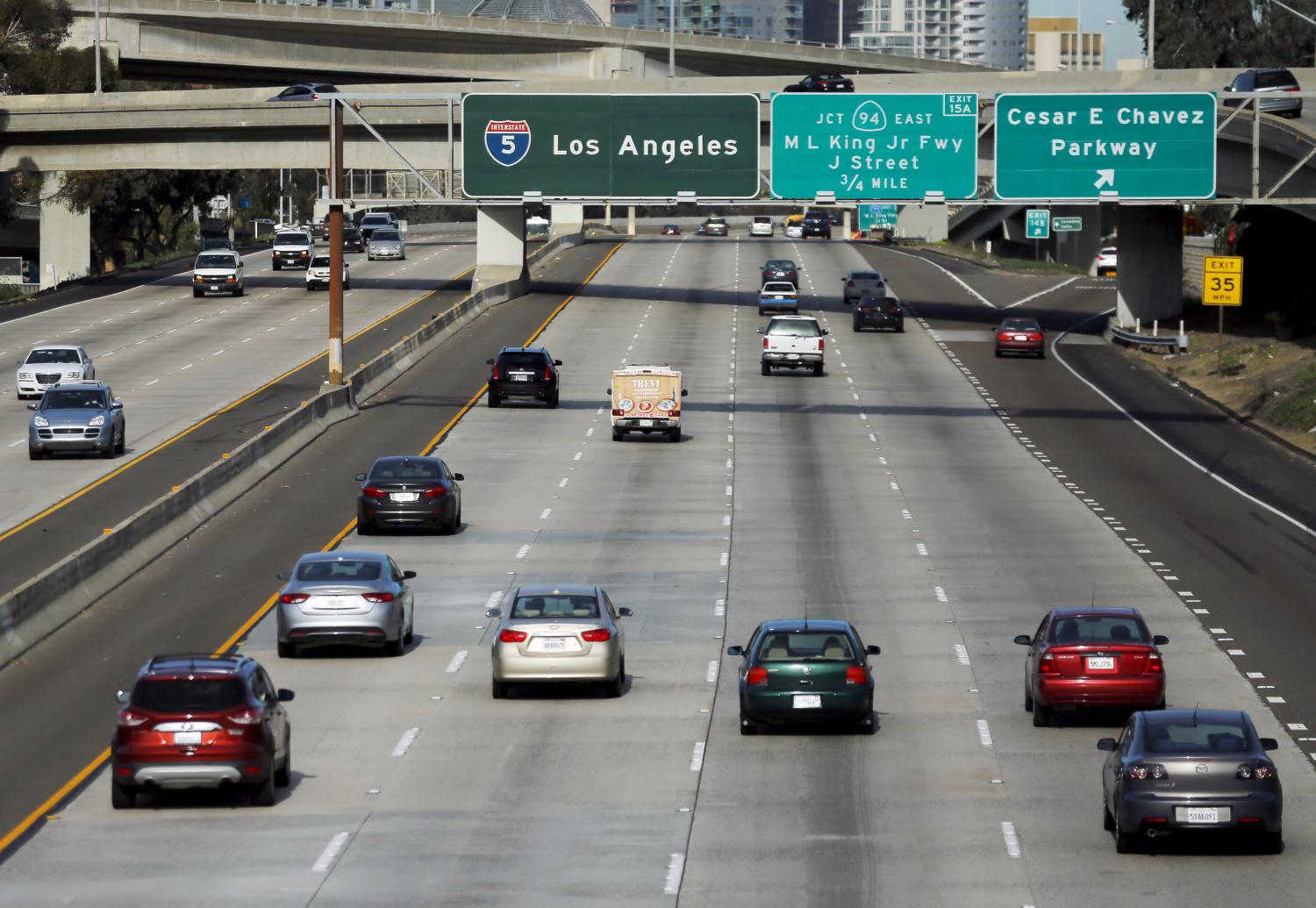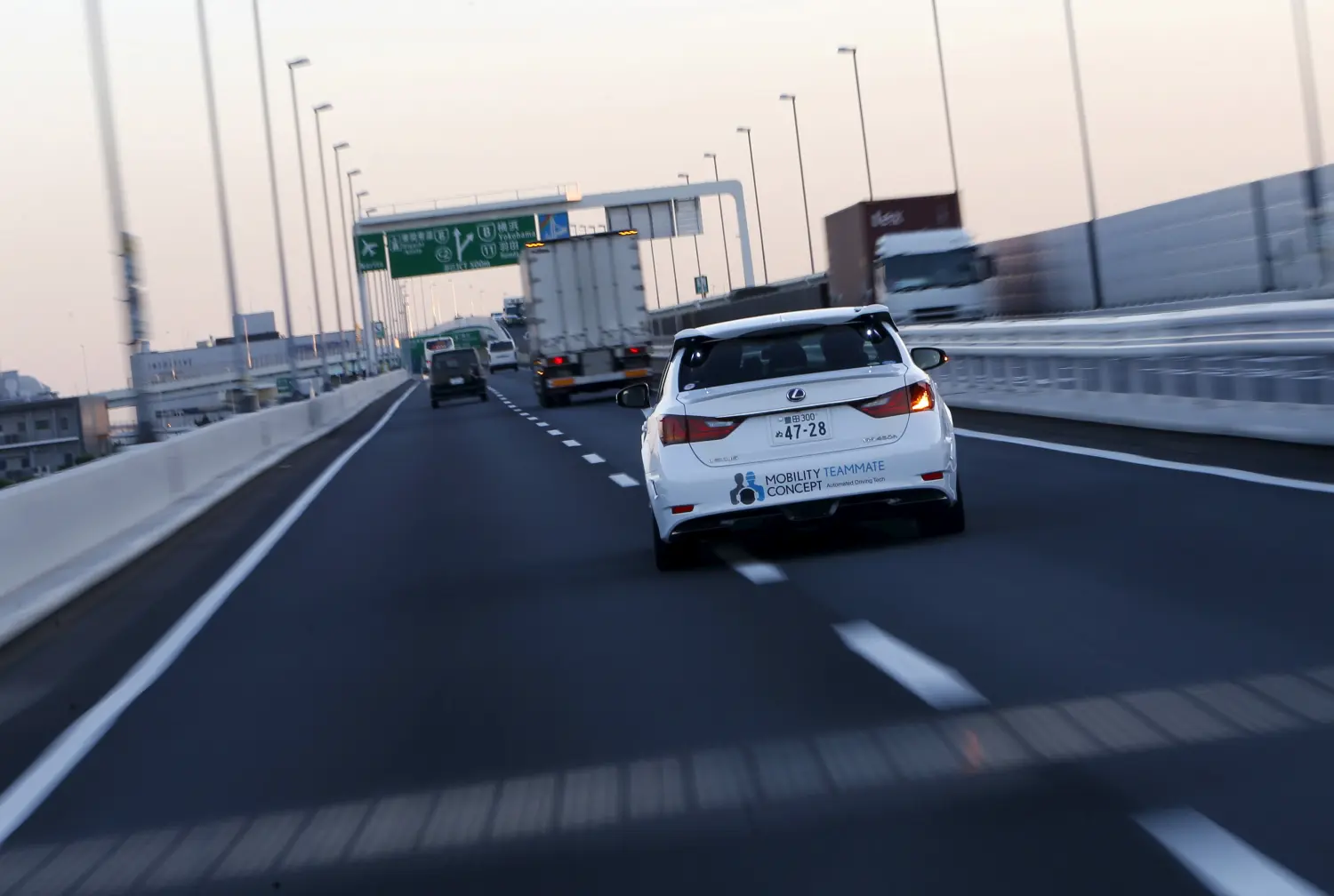The following brief is part of Brookings Big Ideas for America—an institution-wide initiative in which Brookings scholars have identified the biggest issues facing the country and provide ideas for how to address them. (Updated January 25, 2017)
 Uber recently announced that it is offering automated car service to Pittsburgh, another sign of the coming transformation of U.S. transportation. Between now and 2021, according to the World Economic Forum, driverless vehicles are expected to generate $67 billion in economic value and $3.1 trillion in societal benefits.1 By 2040, autonomous vehicles are expected to comprise around 25 percent of the global market.
Uber recently announced that it is offering automated car service to Pittsburgh, another sign of the coming transformation of U.S. transportation. Between now and 2021, according to the World Economic Forum, driverless vehicles are expected to generate $67 billion in economic value and $3.1 trillion in societal benefits.1 By 2040, autonomous vehicles are expected to comprise around 25 percent of the global market.
The technology to power autonomous vehicles has advanced quickly and is poised for rapid deployment. But to realize possible benefits, the United States needs to address key policy, legal, and regulatory concerns. With forward-looking action, government and business can spur the marketplace and help the United States become a world leader in this area.
Currently, the major difficulty is overcoming the regulatory fragmentation caused by 50 states with differing preferences on licensing, car standards, regulation, and privacy protection. Right now, car manufacturers and software developers face conflicting rules and regulations in various states. This complicates innovation because makers want to build cars and trucks for a national or international market. Greater clarity in regard to legal liability and data protection is also needed. Addressing these issues would help manufacturers implement new technologies and help to spur economic growth in transportation.2
Background
Autonomous vehicles involve the application of advanced technological capabilities to cars, trucks, and buses. This includes automated vehicle guidance and braking, lane-changing systems, use of cameras and sensors for collision avoidance, artificial intelligence to analyze information in real-time, and high performance computing and deep learning systems to adapt to new circumstances through 3D high definition maps.
Light detection and ranging systems (known as LiDARs) and artificial intelligence are key to navigation and collision avoidance. The former are a combination of light and radar instruments mounted on the top of vehicles that use imaging in a 360-degree environment from a radar and light beams to measure the speed and distance of surrounding objects. Along with sensors placed along the front, sides, and back of vehicles, these instruments provide information that keeps fast-moving cars and trucks in their own lane, avoids other vehicles, applies brakes and steering when needed, and does so instantly so as to avoid accidents.
Because these cameras and sensors compile a huge amount of information and needs to process it instantly in order to avoid the vehicle in the next lane, autonomous vehicles require high performance computing, advanced algorithms, and deep learning systems to adapt to new scenarios. This means that software is the key, not the physical car or truck itself.
This means that software is the key, not the physical car or truck itself.
Advanced software enables cars to learn from the experiences of other vehicles on the road and adjust their guidance systems as weather, driving, or road conditions shift. Onboard systems can learn from other vehicles on the road through machine-to-machine communications.
Autonomous vehicles are likely to spread in niche markets before they become popular in the broader consumer market. The initial cost of automated cars will be high, due to the addition of cameras, sensors, lasers, and artificial intelligence systems, therefore precluding adoption by the typical consumer. Rather, businesses and niche areas are positioned to be the early adopters. The most likely adopters include those with an interest in ride-sharing cars, buses, taxis, trucks, delivery vehicles, transport vehicles for senior citizens and the disabled, and industrial applications.
Ride-sharing companies are very interested in autonomous vehicles. They see advantages in terms of customer service and labor productivity. All of the major ride-sharing companies are exploring driverless cars. The surge of car sharing and taxi services such as Uber and Lyft in the United States, Daimler’s Mytaxi and Hailo services in Europe, and Didi Chuxing in China demonstrate the viability of this transportation option.
Delivery vehicles and “platoon” trucks traveling together represent another area likely to see quick adoption of autonomous vehicles. Purchases through online platforms and e-commerce sites are rising rapidly, and this has been a boon to home delivery firms. People want to order things electronically and get them delivered within hours.
Benefits of autonomous vehicles
Highway deaths are a major problem around the world. In the United States, an estimated 35,000 people die in auto accidents each year. Worldwide, according to the World Health Organization, 1.24 million people die annually due to highway accidents.3 It is estimated that traffic fatalities cost $260 billion each year and that accident injuries account for another $365 billion. This represents a total of $625 billion annually from highway fatalities and injuries.4
According to a RAND study, “39 percent of the crash fatalities in 2011 involved alcohol use by one of the drivers.”5 This is an area where autonomous vehicles almost certainly will produce major gains in terms of lives saved and injuries avoided. Around 94 percent of U.S. vehicular accidents involve human error, and therefore are potentially avoidable.6
Traffic congestion is a problem in virtually every large metropolitan area. In the United States, for example, drivers spend an average of 40 hours stuck in traffic, at an annual cost of $121 billion.7 Research by Donald Shoup has found that up to 30 percent of the traffic in metropolitan areas is due to drivers circling business districts in order to find a near-by parking space.8 That represents a major source of traffic congestion, air pollution, and environmental degradation. Cars are thought to be responsible for “approximately 30% of the carbon dioxide (CO2) emissions behind climate change.”9
Autonomous vehicles can save on fuel and provide benefits for the environment as a whole.
Automobiles are major contributors to poor quality air. According to a RAND study, “AV [autonomous vehicle] technology can improve fuel economy, improving it by 4-10 percent by accelerating and decelerating more smoothly than a human driver.”10 Since smog in industrial areas is linked to the number of vehicles, having more autonomous cars is likely to reduce air pollution. A 2016 research study estimated that “pollution levels inside cars at red lights or in traffic jams are up to 40 percent higher than when traffic is moving.”11
Needed actions
The biggest U.S. challenge is overcoming the fragmentation of 50 state governments and implementing uniform guidelines across geographic boundaries. Public officials should address questions such as who will regulate autonomous vehicle technology and how will it be regulated and issues such as legal liability, privacy, and data collection.
Provide guidelines for the states
Right now, there are few agreed-upon technical standards and a hodgepodge of regulation at the state government levels.12 Industry officials have to deal with 50 sets of state rules that can differ dramatically. According to Chris Urmson, formerly of Google, “in the past two years, 23 states have introduced 53 pieces of legislation that affect self-driving cars – all of which include different approaches and concepts. Five states have passed such legislation, and – although all were intended to assist the development of the technology in the state – none of those laws feature common definitions, licensing structures or sets of expectations for what manufacturers should be doing.”13 All of this complicates the task of car developers who need a more unified approach. Companies can’t design cars for Texas that won’t operate in Illinois, Florida, or New York.

California, in particular, has passed legislation that is overly restrictive. It sets back fully autonomous vehicles by requiring a driver in the front seat and prevents companies from removing human-operated steering wheels and brakes. That restriction potentially negates some of the benefits of driverless cars while also creating a barrier to innovation in the automotive industry.
In an effort to simplify the regulatory apparatus, the National Highway Traffic Safety Administration is expected to release new rules designed to promote innovation while protecting consumer safety. Among the likely features are the provision of guidelines for uniform regulations in the states, providing exemptions to outmoded safety regulations, operational guidance for new features, and new tools for encouraging autonomous vehicles.
But in a setback for manufacturers, the national government is insisting that fully autonomous vehicles retain a steering wheel and brakes, and that there be a licensed driver in the car. Some designers argue that having those override features opens the door to drunk drivers and creates a dangerous sense of complacency for drivers.
Address legal liability
Consumers cite lower insurance costs as one of the things they like about autonomous vehicles. Almost one-third gave that reason, followed by increased safety and switches to self-driving model as reasons they would buy a partially autonomous vehicle.
It is not clear, though, how insurance companies will handle liability claims in the new world of transportation. Is the accident the fault of the driver, the writer of the software code that controls automated features, or the car manufacturer who made the hardware? It will take some law suits to resolve attributions of responsibility. Insurance firms will take a while to develop actuarial tables based on accident records so they know what premiums to charge drivers.
A RAND study recommends “no fault” insurance for autonomous vehicles. Its rationale is that driverless cars are less prone to human errors and therefore they represent a fundamental change in legal liability.14 Driverless cars essentially shift more of the responsibility from drivers to manufacturers and software designers.
For the latter, product liability law is a promising way to think about legal responsibility. Manufacturers are responsible for defective conditions so their liability would hinge on whether there was a reasonable expectation than their products would operate as expected and not pose undue risks to passengers.
Improve data protection and security
Data collected through vehicles enable new business models. For example, in the insurance industry, “a connected vehicle allows an insurance company to really look at you individually in terms of your actual driving and your real risk and real time situational awareness, so they can innovate a lot of products and a lot of pricing strategies aimed at trying to keep you out of harm’s way, and almost pivot from selling insurance to selling assurance.”15
Several American insurance companies such as State Farm and Progressive have safe driving policies that “collect the miles driven, acceleration, braking, right and left turns, speeds over 80 mph, and the time of day the vehicle is driven, and use the data to calculate insurance rates.”16 Consumer rights activists worry that this information will be sold to third-party vendors and used against drivers. It is clear that vehicles compile a wealth of information on people’s locations, their text messaging, e-commerce purchases (including credit card numbers), and other activities in which they engage while in connected cars.
Given this situation, there need to be safeguards to protect people’s IP addresses, personal information, and GPS location data.
According to Khaliah Barnes of the Electronic Privacy Information Center, the privacy policies of car manufacturers and service companies working on autonomous vehicles allow disclosure of driver information for “troubleshooting, evaluation of use, and research” and to unnamed third-parties “for marketing purposes”.
Conclusion
To summarize, the technology underlying semi- and fully autonomous vehicles is well-developed and poised for commercial deployment. Major automotive companies and software developers have made considerable progress in navigation, collision avoidance, and street mapping.
Governments can accelerate or slow the movement towards self-driving vehicles by the manner in which they regulate. Addressing relevant issues and making sure regulatory rules are clear should be high priorities in all the countries considering autonomous vehicles.
There remain broader societal and ethical considerations, though, that must be considered as we move closer to commercialization. For example, if an automated car is facing the outcome between hitting one child or a group of 10 kids, how does it make that choice? One can imagine a wide variety of ethical issues that come along and software designers have to make choices regarding how to deal with them.
In addition, there are important ramifications for the workforce. Uber has around one million drivers on the road. Phasing in autonomous vehicles likely will mean that at least some of these individuals will lose their jobs and require retraining for other positions. Learning how to navigate these economic and social ramifications is a major challenge facing the world.
Acknowledgment: I want to thank Hillary Schaub for her valuable research assistance on this project.
-
Footnotes
- Bruce Weindelt, “Digital Transformation of Industries: Automotive Industry,” World Economic Forum in collaboration with Accenture, January, 2016.
- For more details, see Darrell M. West, “Moving Forward: Self-Driving Vehicles in China, Europe, Japan, Korea, and the United States,” Brookings Institution Center for Technology Innovation, September, 2016.
- World Health Organization, “Global Health Observatory Data: Number of Road Traffic Deaths”, 2010.
- Morgan Stanley Research, “Nikola’s Revenge: TSLA’s New Path of Disruption”, February 25, 2014, pp. 24-26.
- James Anderson, Nidhi Kalra, Karlyn Stanley, Paul Sorensen, Constantine Samaras, Oluwatobi Oluwatola, “Autonomous Vehicle Technology: A Guide for Policymakers,” RAND Corporation, 2016, p. xiv.
- Nathaniel Beuse Testimony Before the House Committee on Oversight and Government Reform, November 18, 2015, p. 1. Also see Alyssa Abkowitz, “Baidu Plans to Mass Produce Autonomous Cars in Five Years,” Wall Street Journal, June 2, 2016.
- U.S. Department of Transportation, “Beyond Traffic, 2045: Trends and Choices,” 2015, p. 11.
- Daniel Shoup, “Cruising for Parking,” Access, Volume 30, 2007, pp. 16-22.
- Bruce Weindelt, “Digital Transformation of Industries: Automotive Industry,” World Economic Forum in collaboration with Accenture, January, 2016, p. 4.
- James Anderson, Nidhi Kalra, Karlyn Stanley, Paul Sorensen, Constantine Samaras, Oluwatobi Oluwatola, “Autonomous Vehicle Technology: A Guide for Policymakers,” RAND Corporation, 2016, p. xvi.
- Tatiana Schlossberg, “Stuck in Traffic, Polluting the Inside of Our Cars,” New York Times, August 29, 2016.
- National Conference of State Legislatures, “Autonomous Self-Driving Vehicles Legislation,” February 23, 2016.
- Chris Urmson, Testimony Before the Senate Committee on Commerce, Science and Technology, March 15, 2016, p. 4.
- James Anderson, Nidhi Kalra, Karlyn Stanley, Paul Sorensen, Constantine Samaras, Oluwatobi Oluwatola, “Autonomous Vehicle Technology: A Guide for Policymakers,” RAND Corporation, 2016, p. 116.
- Jeff McMahon, “Driverless Cars Could Drive Car Insurance Companies Out of Business,” Forbes, February 19, 2016.
- Khaliah Barnes Testimony Before the House Committee on Oversight and Government Reform, November 18, 2015, p. 13.






